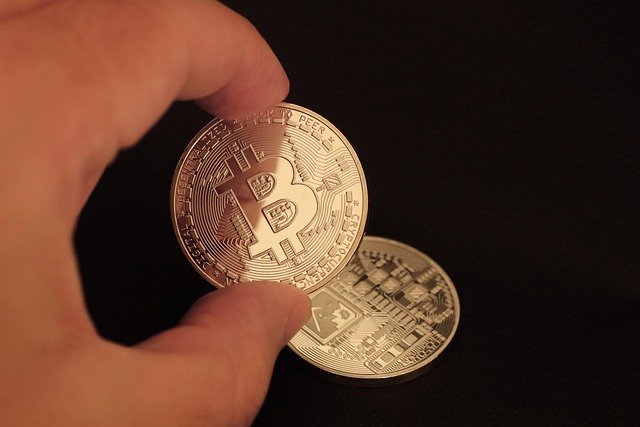What Is Altcoin Season in Crypto: An In-Depth Exploration
Author: Jameson Richman Expert
Published On: 2025-09-23
Prepared by Jameson Richman and our team of experts with over a decade of experience in cryptocurrency and digital asset analysis. Learn more about us.
Understanding what constitutes an altcoin season in the cryptocurrency market is essential for traders, investors, and enthusiasts aiming to optimize their strategies within this highly volatile and rapidly evolving ecosystem. An altcoin season refers to specific periods characterized by a notable outperformance of alternative cryptocurrencies—collectively known as altcoins—relative to Bitcoin, which remains the dominant benchmark in the space. During these phases, many altcoins experience rapid, sometimes exponential, price appreciation driven by a confluence of factors such as shifts in market sentiment, technological innovations, macroeconomic conditions, and behavioral dynamics among investors. While Bitcoin often establishes the overall market tone, altcoins can sometimes seize the limelight, presenting lucrative opportunities for those equipped with the right indicators and timing. Recognizing the early signs of an impending altcoin season can significantly enhance trading decisions, portfolio diversification, and risk management strategies.

The Concept of Altcoin Season and Its Significance in Crypto Markets
The term "altcoin season" is frequently discussed within trading communities, yet a comprehensive understanding requires examining its underlying mechanics. Essentially, an altcoin season manifests when the combined market capitalization and trading volumes of altcoins surpass those of Bitcoin, reflecting a paradigmatic shift where investor interest pivots from the flagship cryptocurrency to a broader array of blockchain projects. This transition often follows a sustained bullish trend in Bitcoin, which creates liquidity and confidence that traders then rotate into altcoins with promising fundamentals, innovative features, or higher volatility profiles. Moreover, altcoin seasons are indicative of a maturing market environment—where diversification and technological progress are gaining prominence—signaling increased confidence in the broader crypto ecosystem. These periods often correlate with heightened community engagement, increased liquidity, and accelerated project development, which can influence the long-term health and innovation capacity of the cryptocurrency space.
Importantly, altcoin seasons can serve as a catalyst for technological innovation and ecosystem expansion. During these times, developers often accelerate projects and roll out new upgrades, leading to network upgrades, new protocol launches, and cross-platform integrations. This surge in activity not only boosts prices but also fosters a more dynamic and resilient market. Additionally, altcoin seasons are often accompanied by increased institutional participation, which, while providing stability, also introduces complexities such as market manipulation and regulatory scrutiny. Therefore, understanding the nuanced dynamics behind altcoin seasons enhances strategic decision-making and helps distinguish between genuine growth and speculative bubbles.
Historical Patterns of Altcoin Seasons: Lessons from the Past
Examining historical occurrences of altcoin seasons reveals recurring cyclical patterns that traders and analysts can leverage for strategic timing. The most notable recent example was the 2021 bull run, where Bitcoin’s price surged past $60,000, heralding a surge in altcoin performance. During this period, altcoins such as Ethereum, Cardano, Solana, and others exhibited even more dramatic gains, often outperforming Bitcoin’s returns. Several factors fueled this surge: widespread adoption of decentralized finance (DeFi), explosive growth in non-fungible tokens (NFTs), major blockchain upgrades, and macroeconomic stimuli like fiscal expansion and low-interest rate environments. Ethereum’s transition to Ethereum 2.0, alongside the proliferation of DeFi protocols and layer 2 scaling solutions, served as catalysts for its outperformance. These milestones serve as key indicators that technological upgrades, ecosystem expansion, and positive market sentiment can spark substantial altcoin rallies.
Historical analysis shows that altcoin seasons tend to occur after Bitcoin has established a bullish trend, acting as a "fuel" that propels investor interest into altcoins seeking higher returns. The 2017 bull run, for example, saw Bitcoin rise from around $1,000 to nearly $20,000, followed by an explosive altcoin rally where hundreds of projects experienced triple or quadruple-digit gains. Similarly, the 2020-2021 cycle displayed a pattern where Bitcoin’s steady rise laid the groundwork for altcoins to outperform, driven by innovations and macroeconomic factors. Recognizing early signs, such as surging trading volumes, rising market caps relative to Bitcoin, and technological milestones, can help traders anticipate upcoming altcoin seasons and understand underlying market psychology more deeply.
Key Indicators Signaling an Approaching Altcoin Season
Early detection of an impending altcoin season is vital for maximizing profit potential and minimizing risks. Several key indicators provide actionable insights:
- Decreasing Bitcoin Dominance: When Bitcoin’s market dominance declines from its historical peaks (e.g., below 60%), it signals that capital is flowing out of Bitcoin into altcoins. This shift often marks the initial phase of an altcoin season, as investors seek higher returns in alternative tokens with greater volatility or innovative features.
- Growing Altcoin Market Cap and Trading Volumes: An increase in the total market capitalization of altcoins, along with rising trading volumes across exchanges, indicates heightened investor enthusiasm and liquidity inflows. These metrics often serve as precursors to price surges, providing early warning signals for traders.
- Technical Breakouts and Positive Market Sentiment: Bullish chart patterns—such as breakouts above key resistance levels—combined with positive news, technological upgrades, or macroeconomic triggers, reinforce the likelihood of an impending altcoin rally. Technical analysis tools like moving averages, RSI, and volume spikes help confirm these signals.
- On-Chain Metrics and Network Activity: Metrics such as rising transaction volumes, increased active addresses, and heightened network activity on specific altcoins signify growing on-chain engagement, often leading to price appreciation. Platforms like Glassnode, Santiment, and IntoTheBlock provide vital data for tracking these indicators.
Combining these signals through multi-faceted analytical approaches—including dominance charts, technical tools, and on-chain data—can help traders pinpoint optimal entry and exit points. Automated alerts and dashboard tracking further enable timely decisions during high-volatility phases.

Effective Strategies for Participating in Altcoin Seasons
Maximizing gains during altcoin seasons requires disciplined, well-informed strategies. The following practices are based on extensive market analysis and experience:
- Selective Investment in Projects with Solid Fundamentals: Focus on projects with active development teams, clear use cases, strong community support, and transparent tokenomics. Conduct comprehensive due diligence—review code audits, team backgrounds, project roadmaps, and partnerships—to avoid hype-driven or speculative tokens that may be prone to pump-and-dump schemes or sudden collapse.
- Portfolio Diversification: Spread investments across various sectors such as DeFi, NFTs, Layer 2 scaling solutions, gaming tokens, and privacy coins. Diversification minimizes risks associated with sector-specific downturns and allows capturing gains across different innovative trends.
- Risk Management with Stop-Loss and Take-Profit Orders: Set predefined stop-loss levels to limit potential losses and take-profit points to lock in gains during rapid price movements. Use trailing stops to follow upward trends and protect accumulated profits amidst market corrections.
- Periodic Portfolio Rebalancing: Regularly review holdings, especially in response to project updates, market trends, and macroeconomic developments. Rebalancing ensures alignment with your risk profile and investment goals, preventing overconcentration in overhyped tokens.
- Utilize Reputable Platforms and Advanced Trading Tools: Trade through established exchanges like Binance, Mexc, Bitget, and Bybit, which offer features such as margin trading, futures, leverage, and automated order types. These tools are crucial for managing high volatility effectively, enabling precise entry, exit, and hedging strategies.
Risks and Cautions During Altcoin Seasons
While altcoin seasons present lucrative opportunities, they are inherently risky due to extreme volatility and market manipulation potential. Key risks include:
- Market Manipulation: Low-liquidity tokens are vulnerable to pump-and-dump schemes, requiring diligent verification of project legitimacy, trading volume, and community activity. Beware of suspicious trading patterns, fake volume, and anonymous teams.
- Technological and Security Vulnerabilities: Many altcoins are still in development phases, with potential bugs, security flaws, or compromises in code. Always review security audits, community feedback, and project transparency before investing.
- Regulatory Risks: Increasing regulatory scrutiny can impact certain tokens or sectors, influencing their trading legality and adoption. Stay informed about jurisdictional laws and potential restrictions to avoid legal complications.
- Overtrading and Emotional Decision-Making: The allure of quick gains can tempt traders into impulsive actions. Stick to a pre-planned strategy, avoid chasing every pump, and exercise patience during corrections to prevent substantial losses.
Extensive research, credible information sources, and disciplined trading practices are paramount. Never invest more than you can afford to lose and always maintain a long-term perspective amid short-term volatility.
The Future of Altcoin Seasons and Emerging Market Trends
Looking forward, altcoin seasons are poised to remain a recurring feature of the crypto landscape, driven by technological innovation, ecosystem expansion, and evolving investor interest. The proliferation of decentralized finance (DeFi), NFTs, Layer 2 solutions, and cross-chain interoperability continues to fuel enthusiasm for altcoins. As the market matures, factors such as institutional participation, regulatory clarity, and technological advancements—like Ethereum’s transition to proof-of-stake and scalability upgrades—will influence the frequency, duration, and intensity of altcoin rallies.
Emerging trends such as blockchain interoperability protocols (e.g., Polkadot, Cosmos), decentralized autonomous organizations (DAOs), and Web3 infrastructure are creating interconnected ecosystems that facilitate cross-chain communication, fostering synchronized altcoin rallies across multiple networks. These innovations enable projects to leverage collective liquidity and user bases, amplifying market momentum. Additionally, increased institutional involvement—while bringing enhanced liquidity and stability—introduces sophisticated market behaviors and manipulation tactics requiring vigilant risk management. Regulatory developments globally will also shape market dynamics, potentially accelerating adoption or imposing restrictions.
For those interested in the long-term outlook, consider exploring projections such as this Ethereum forecast for 2035: Ethereum long-term forecast.

Conclusion: Harnessing the Power of Altcoin Seasons
In summary, understanding what constitutes an altcoin season unlocks significant profit potential within the volatile crypto markets. It requires a combination of technical acumen, fundamental analysis, and disciplined risk management. Recognizing early signals—such as a decline in Bitcoin dominance, surging on-chain activity, and major technological milestones—can position traders for strategic advantage. Tracking evolving trends like DeFi, NFTs, Layer 2 solutions, and cross-chain interoperability helps anticipate future altcoin rallies. Leveraging reputable trading platforms, advanced analytical tools, and maintaining a disciplined approach ensures that traders can navigate these dynamic periods effectively. Ultimately, success in capitalizing on altcoin seasons hinges on a balanced combination of research, patience, and prudent risk controls, transforming cyclical market phenomena into opportunities for sustained growth and long-term wealth accumulation in the vibrant world of crypto investing.